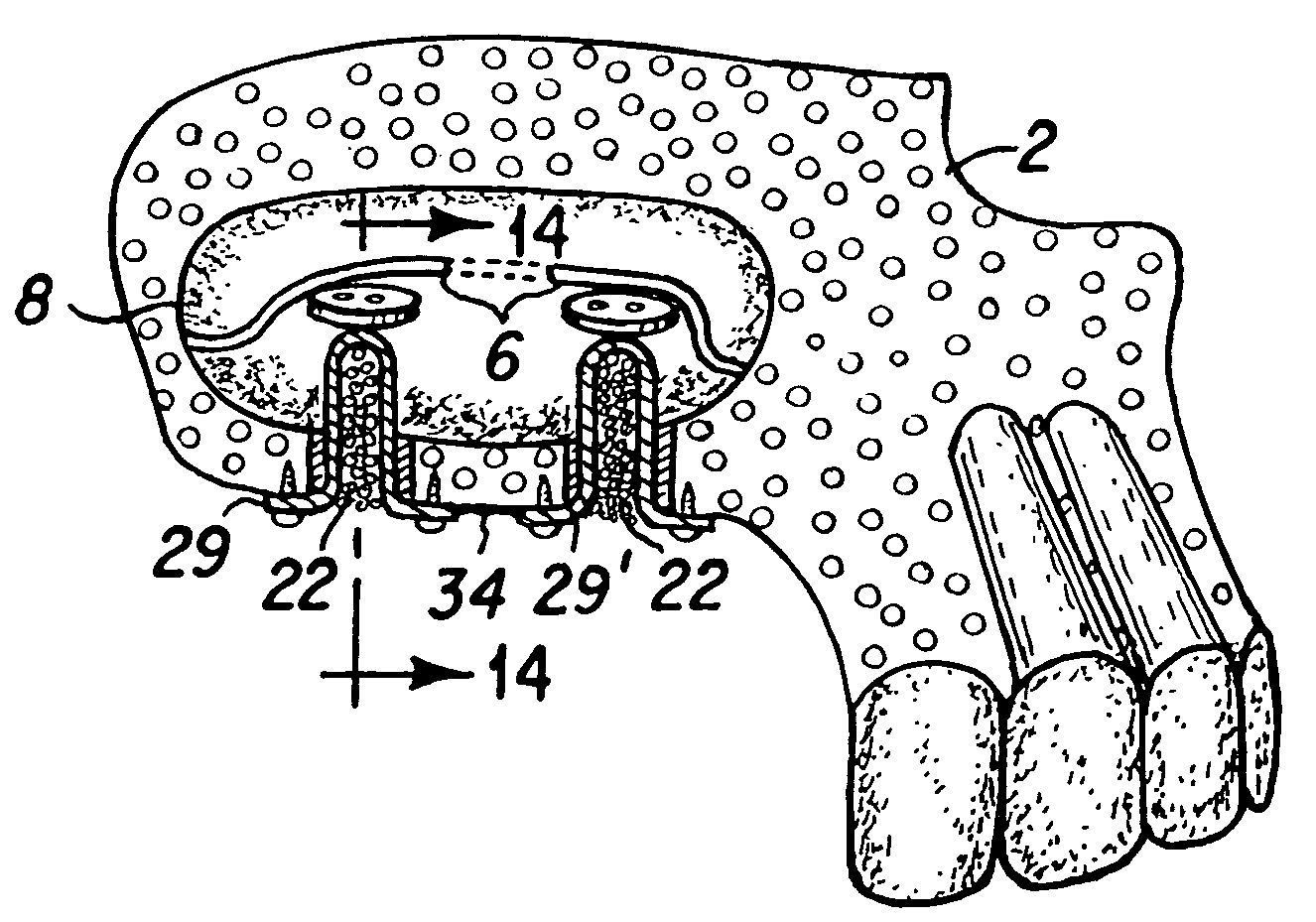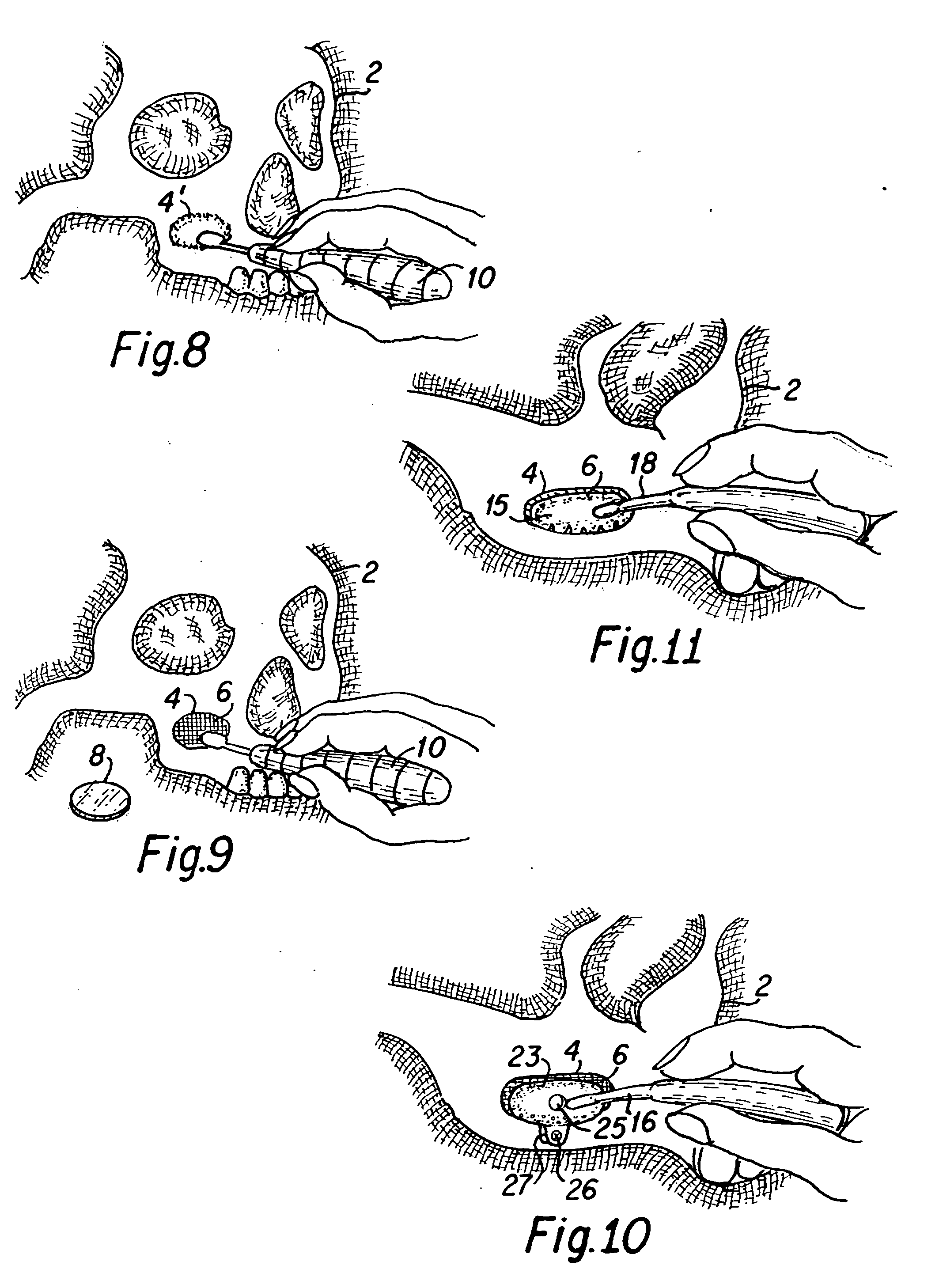[0008] Two proven procedures for increasing bone depth in the maxilla sinus in the region of the molars and premolars are currently known and found in practice. The first is known as the Caldwell Technique or, alternately, as the Window technique. Both names may be used interchangeably in this specification. The second procedure is known as the
Osteotome technique, the
osteotome being a round dental
chisel without a bevel that is used for
cutting and expanding bone. Both techniques involve increasing the bone depth at least on the bottom of the maxilla sinus, which basically reduces the size of the sinus cavity as defined by the Schneiderian membrane, next discussed. Two text books that describe the foregoing restorative procedures in great detail for training of doctors are The Sinus Bone Graft, Ole T. Jensen, DDS, Quintessence Publishing Co. Inc, copyright 1999 and Practical
Implant Dentistry, Arun K. Garg, D. M. D, Taylor Publishing Co. ISBN 0-9648918-1-6 to which the interested reader may make reference.
[0009] The sinus cavity in the
skull is an
air filtration space overlying the position of the molars and pre-molars that ranges in size from approximately ten to twenty milliliters of volume, depending on the individual. There's one such cavity on each side of the
skull. The sinus cavity is bordered by the sinus membrane, also known as the Schneiderian membrane, a
mucous membrane lining the nasal chambers. Both terms may be used herein interchangeably to identify the membrane. The sinus cavity has the capacity to pneumatize or crenate because of the supporting and surrounding conditions, such as loss of teeth or chronic
irritation, and, yet, functions in relative health. Thus, the reduction in the size of this cavity, when moved superiorly, as by inserting
bone material beneath the sinus membrane and raising the height of that membrane above the bone, does not
pose a serious
threat to the patient's health.
[0010] However, if the sinus membrane is damaged,
bacterial contaminants are introduced into the cavity, resulting in
inflammation and infection. Should such damage occur, all augmentation and
implant procedures are halted until the damage is cured, which could take months. The membrane is a body part that is capable of auto-repair and, left undisturbed, the body repairs the membrane. That autogenuous repair takes four to eight weeks on average. Minor
tears may also be fixed by applying a collagen tape across or along the tear.
[0011] In the Caldwell or window technique, as variously called, an
osteotomy is performed on the lateral wall of the
maxillary sinus above the tooth line by
cutting a flap from the covering
skin or gum and folding the flap out of the way to
expose the bone. Then, using a small round bur in an electric rotary instrument, the outline of a window, an elliptical window as example, is ground into the lateral bone wall. Using that outline as a guide, the burring continues along the outline to a depth in the bone at which one is able to see the dark inner lining of the sinus membrane. The sinus membrane is rather fragile. Hence, care must be taken to avoid tearing the membrane with the rotary instrument.
[0012] With the connection to the
cut-away bone portion weakened by the
grinding, the formed window may be infractured from the maxillary using a few light taps with a
mallet. Use of excessive force to infracture the external wall of the sinus cavity, however, may result in producing a large tear in the sinus membrane. That tear could compromise the success of the procedure. Despite the exercise of due care under the circumstances, because of the uncertainty in the bone wall thickness, the sinus membrane may inadvertently be torn or
cut in perhaps twenty-percent of the cases. Thus, a principal purpose of this invention is to permit bone augmentation using either of the two procedures, slightly modified, even in the presence of a tear in the sinus membrane. As an
advantage, the invention avoids the delays previously required to fix the tear in the membrane.
 Login to View More
Login to View More 


